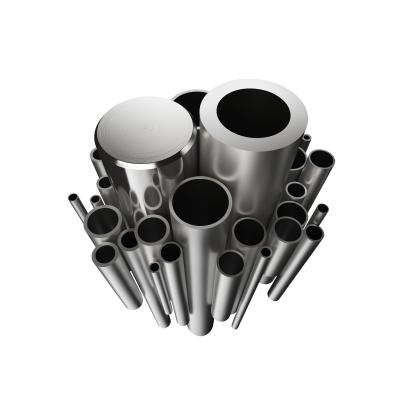
Sandvik, a developer and producer of advanced stainless steels, special alloys, titanium and other high-performance materials, has launched Sanicro® 825, Sandvik’s first-ever nickel-iron-chromium alloy in bar and hollow bar, for improved performance in corrosive, high-temperature environments.
Sanicro® 825 (UNS NO8825) extends the company’s growing Sanicro® portfolio of nickel alloys and austenitic stainless steels for aggressive wet, corrosive and high-temperature, pressure, acidic and seawater conditions.
A high-strength alloy with minimum 40% nickel content, Sanicro® 825 has excellent corrosion resistance to acids and alkalis, superior resistance to stress corrosion cracking (SCC) and good corrosion resistance to phosphoric, nitric, sulfuric, and organic acids, seawater, caustic chloride alkalis and ammoniac media.
Stable, easy to machine and weld, the new alloy is ideal for use in a wide range of components and installations including heat exchangers, evaporators, offshore piping systems, seawater coolant, valves and flanges. It serves a multitude of industries including oil and gas, chemical, petrochemical, pulp and paper, pickling equipment, nuclear fuel processing and food processing.
Available in three- to seven-meter lengths with an outside diameter (OD) ranging from 20mm-260mm, Sanicro® 825 offers a cost-effective alternative to superalloys such as Alloy 625 and Alloy 718. Its chemical formulation has been tailored within EN, UNS and ASTM standards.
“Sanicro® 825 opens new high-performance possibilities for our customers. At elevated temperatures and in corrosive conditions, this new grade offers clear advantages to standard stainless steel or duplex grades and is more cost-efficient than some superalloys,” said Martin Holmquist, Business Development Manager, Sandvik Materials Technology.
“While we naturally adhere to all industry standards, Sanicro® 825 is no ordinary grade. At Sandvik, we strive to set a ‘standard within the standard’, which means consistently adhering to even tighter tolerances on the chemical composition than those technically required. This is true for Sanicro® 825, which we’ve further tailored and optimized to find the sweet spot for bar and hollow bar,” said Marcus Hillbom, Technical Marketing Manager & Sales, Sandvik Materials Technology.
“With a long tradition in R&D for some of the most demanding industries around the world, Sanicro® 825 builds on Sandvik’s 60-year legacy of making premium, high-alloy Sanicro® for corrosive and high-temperature environments,” said Henrik Zettergren, Global Product Manager, Sandvik Materials Technology.
The Sanicro® 825 bar and hollow bar are now available globally.
Contact Details
Related Glossary Terms
- alloys
alloys
Substances having metallic properties and being composed of two or more chemical elements of which at least one is a metal.
- coolant
coolant
Fluid that reduces temperature buildup at the tool/workpiece interface during machining. Normally takes the form of a liquid such as soluble or chemical mixtures (semisynthetic, synthetic) but can be pressurized air or other gas. Because of water’s ability to absorb great quantities of heat, it is widely used as a coolant and vehicle for various cutting compounds, with the water-to-compound ratio varying with the machining task. See cutting fluid; semisynthetic cutting fluid; soluble-oil cutting fluid; synthetic cutting fluid.
- corrosion resistance
corrosion resistance
Ability of an alloy or material to withstand rust and corrosion. These are properties fostered by nickel and chromium in alloys such as stainless steel.
- stainless steels
stainless steels
Stainless steels possess high strength, heat resistance, excellent workability and erosion resistance. Four general classes have been developed to cover a range of mechanical and physical properties for particular applications. The four classes are: the austenitic types of the chromium-nickel-manganese 200 series and the chromium-nickel 300 series; the martensitic types of the chromium, hardenable 400 series; the chromium, nonhardenable 400-series ferritic types; and the precipitation-hardening type of chromium-nickel alloys with additional elements that are hardenable by solution treating and aging.
- superalloys
superalloys
Tough, difficult-to-machine alloys; includes Hastelloy, Inconel and Monel. Many are nickel-base metals.
